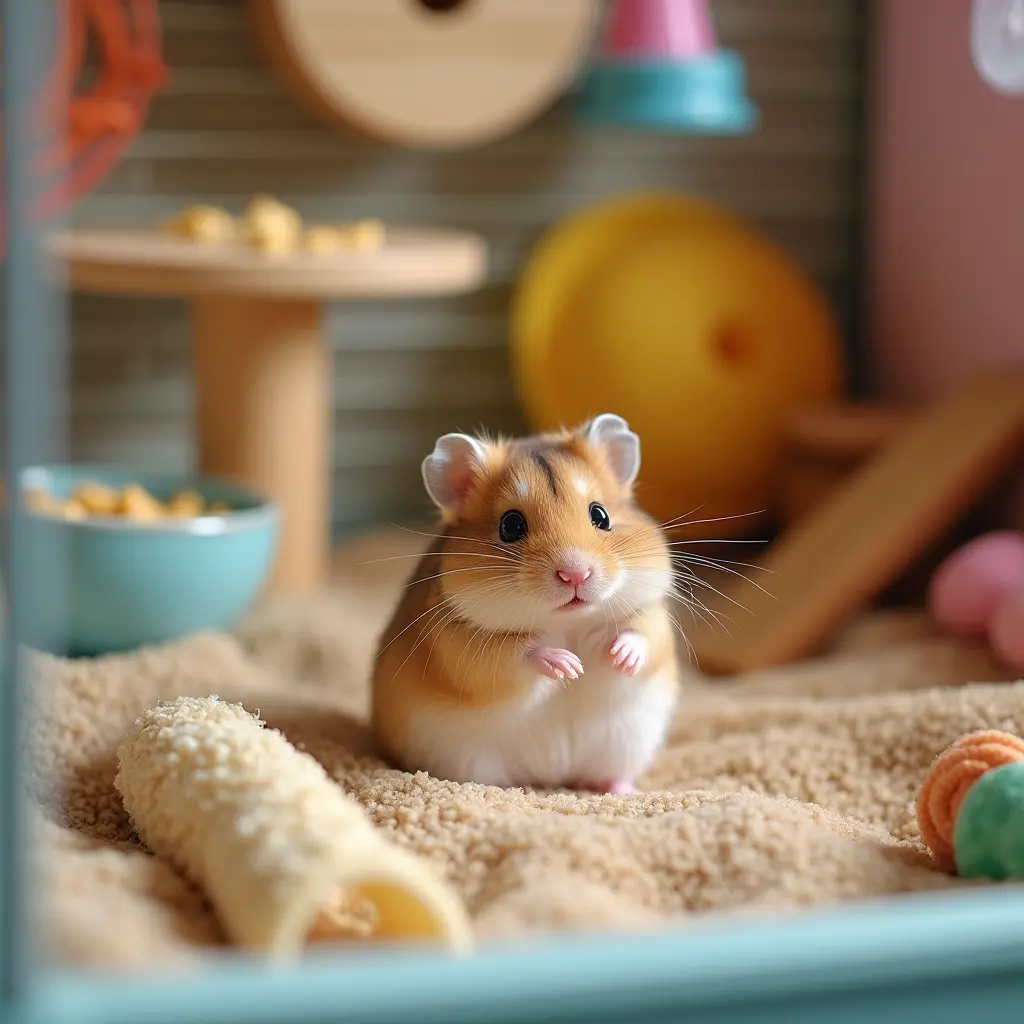Fluff and personality are the main reasons why Syrian hamsters are among the most beloved household pets worldwide. Native to the dry regions of the Middle East, these adorable creatures have found their way into the hearts and homes of animal lovers everywhere. Whether you’re planning to adopt a Syrian hamster or just curious about these charming animals, this comprehensive guide will cover everything you need to know about their background, unique characteristics, and essential care requirements.
The History
The story of Syrian hamsters dates back to the arid plains and rocky hills of Syria and Turkey. First described by British zoologist George Waterhouse in 1839, these small creatures remained relatively unnoticed until the early 20th century. Between 1930 and 1932, a female professor at Hebrew University, Jerusalem, successfully bred a wild female hamster, and this litter became the foundation for the modern domestic Syrian hamster.
Since being brought into captivity, Syrian hamsters have gained popularity worldwide for their friendly behavior, small size, and ease of care, making them ideal pets for families and first-time pet owners. Understanding their origins adds depth to our appreciation of these small companions, highlighting their resourcefulness and history.


Understanding the Traits and Behavior
Syrian hamsters, often referred to as “golden hamsters,” have several distinctive qualities:
- Size: Typically, they measure between 5-7 inches in length and weigh about 4-5 ounces.
- Coat: Their fur is short, dense, and comes in various colors, including deep browns, whites, and other unique patterns.
- Activity: Syrian hamsters are nocturnal and very inquisitive. Though solitary by nature, they can become affectionate and friendly with regular, gentle handling. However, they need time and patience to trust their owners.
- Hoarding Instincts: These hamsters are natural hoarders and love to collect food in their cheek pouches. This behavior is not only endearing but also a survival mechanism in the wild.
Setting Up the Perfect Habitat
Creating the ideal home for your Syrian hamster is crucial for their well-being:
- Cage Selection: Choose a spacious cage with good ventilation. The minimum recommended floor space is 450 square inches, but the larger, the better. Wire cages, glass tanks, and plastic habitats are all acceptable, provided they offer adequate space and security.
- Enrichment: Include an exercise wheel with a solid bottom, tunnels, and chew toys to keep your hamster physically and mentally engaged.
- Bedding: Provide soft nesting materials such as Aspen shavings or paper-based substrates for burrowing.
- Location: Keep the cage in a quiet, draft-free area away from direct sunlight and temperature fluctuations to ensure your hamster remains stress-free.
Feeding Your Syrian Hamster: A Balanced Diet for Health
To ensure your Syrian hamster remains healthy, it’s important to provide a well-balanced diet:
- Base Diet: Offer high-quality, commercially manufactured hamster food that includes pellets or seed mixes specifically formulated for their nutritional needs.
- Fresh Vegetables: Supplement with vegetables like carrots, spinach, and broccoli.
- Treats: Give fruits sparingly, as they contain sugars. You can also offer protein sources like mealworms or boiled eggs.
- Water: Ensure your hamster always has access to fresh water, either through a drip bottle or a shallow dish. Clean and replenish the water daily to prevent contamination.
Grooming and Care for Syrian Hamsters
Grooming is generally minimal as Syrian hamsters groom themselves. However, there are a few key maintenance tasks:
- Nail Trimming: Occasionally trim their nails if necessary.
- Teeth Care: Provide chew toys to prevent their teeth from overgrowing.
- Health Monitoring: Watch for signs of illness, such as laziness, weight loss, or unhealthy fur. Regular handling helps ensure your hamster stays social and allows you to spot any issues early.
Common health concerns for Syrian hamsters include respiratory infections, wet tail, and dental problems. Regular vet visits and maintaining a clean environment can help prevent these issues.
Bringing a Syrian Hamster into Your Home
Adopting a Syrian hamster is both exciting and responsible. When purchasing a hamster, it’s best to find a reputable breeder or animal shelter that prioritizes the health and welfare of the animals.
- Choosing a Healthy Hamster: A healthy Syrian hamster should be alert, active, and have a shiny coat with bright eyes.
- Preparing Their Home: Before bringing your hamster home, make sure the cage is fully prepared with all necessary accessories. Be patient and gentle with your new pet as they adjust to their new environment and build trust with you.

Conclusion: Enjoying Life with Your Syrian Hamster
Syrian hamsters are delightful animals with rich histories and unique characteristics. By understanding where they come from, how they behave, and how to care for them, you can create the best environment for your new companion. With proper housing, feeding, and attention, your Syrian hamster will thrive and bring endless joy to your life.
Whether you’re an experienced hamster enthusiast or new to the world of small pets, there’s always more to learn about these fascinating creatures.
